INBOUND 2022 is a wrap, and once again HubSpot didn’t disappoint. This year, I joined Portent’s client partner team for three days of exceptional programming that covered all aspects of inbound marketing.
With all of the quality content, it was hard to narrow down our favorites! Below are the top takeaways from INBOUND 2022 that Leyla Church, Kyle Eliason, Erika Lang, Kirsten Pickworth, Ann Robison, Matthew Taufa’asau, and I wanted to share.
Category Entry Points In A B2B World: Buying Situations To Brand Sales
Presented by: Ty Heath, The B2B Institute
Recapped by Ann Robison
The value of Brand Strength and its role in a business’ overall financial performance is something many non-marketers underestimate, and that is in part due to the fact that the traditional Marketing funnel used in B2B isn’t Finance-centric. It’s not even customer-centric.
One way to counteract this disconnect is to stop non-marketers from thinking about top-funnel, mid-funnel, and bottom-funnel users, and instead accept that for most B2B industries, the percent of current buyers “In Market” pales in comparison to future buyers “Out of Market.”
What this means for marketers is that “Brand Strength” is only as strong as its capacity for longevity in the minds of “out-of-market future buyers.” Enter Category Entry Points.
Category Entry Points (CEPs) are defined by Professor Jenni Romaniuk of the Ehrenberg-Bass Institute as “the cues that category buyers use to access their memories when face with a buying situation.” And they’re important to marketers because context matters and the memories associated with brands affect how and when consumers think of brands.
The example used in Ty Heath’s presentation was coffee brands, and how the coffee brand that comes to mind varies dramatically depending on the situational frame of the question.
- What coffee brand do you think of when you’re meeting a friend to chat?
- What coffee brand do you think of when you’re sipping your first cup in an Air BnB?
- What coffee brand do you think of when you’re making a quick caffeine stop on a long drive?
In order to successfully market to the 95% of out-of-market future buyers, marketers need to identify and evaluate what CEPs make sense for their specific brand and strategize accordingly.
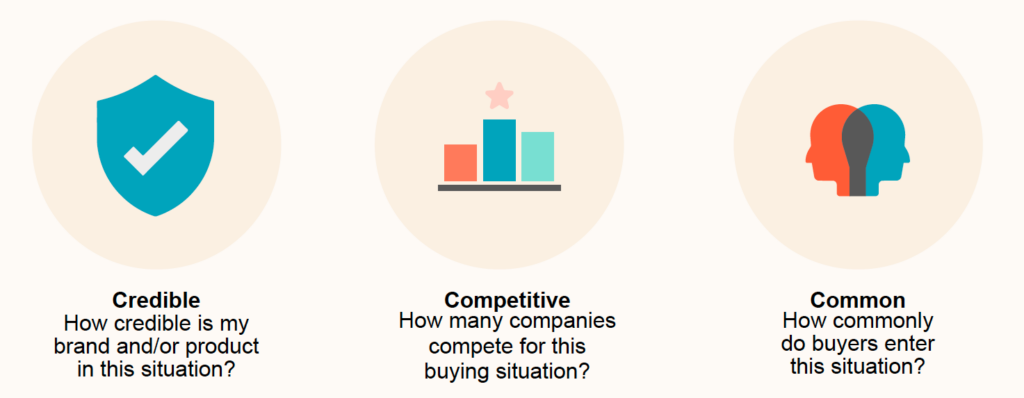
Here are some example ads:

My most actionable takeaway
With 95% of your potential buyers not even in the market for your product yet, the value of brand strength and mental market share is intrinsically connected to the financial performance of a business. Because, to quote Ty Heath, buyers can only buy brands they remember. Don’t underestimate the power of CEPs in capturing mental market share.
Check out the full report at the b2binstitute.
How Modern Ceos, Founders, And Revenue Leaders Go-To-Market And Become Leaders In Their Category
Presented by: Sangram Vajre, GTM Partners
Recapped by Erika Lang
Go-to-market is broken. Part of this is due to the burst of complexity that we continue to inherit as a growing digital society. The sophistication of a growing digital economy also means that the channels that support it are also becoming difficult to tease apart from one another. In fact, GTM itself has evolved since it first emerged onto the scene. Sangram Vajre explores this issue by walking through a series of questions:
- Why GTM is broken
- How to fix it with a GTM operating system
- Where the future of GTM is headed
You don’t have a marketing problem. You don’t have a sales problem or a customer success problem or a even a product problem. You have a Go-to-market problem.
One of the sources of this problem is that there’s confusion about who owns the go-to-market strategy. A survey GTM Partners ran produced the remarkable statistic that 77% of over 1,000 B2B professionals believe that GTM belongs to Marketing or to Sales. However, GTM is informed by multiple functions within an organization. At any given moment, companies exist in at least 1 of 5 Valleys of Death that are symptomatic of a misalignment between the roles that feed an organization’s GTM:
- They’ve launched a product but can’t create enough demand;
- They’ve generated enough demand but they can’t sell.
- They can close customers, but their customer team struggles to deliver or has to reset expectations.
- Their customers love their product but can’t seem to quantify the ROI enough to renew.
- Their customers like what they do, but fail to see their value increase as their solution improves.
Founders and CEO’s of companies have to be obsessed with revenue growth, but overwhelmingly lack an effective foundation to traverse these valleys. What’s worse is that an organization can experience growth yet still suffer from a failing GTM that they cannot scale as the market moves. Alleviating this issue means utilizing a new GTM operating system.
Old frameworks don’t apply anymore because they addressed simpler problems.
I’m about to throw a lot of acronyms at you, but the crux of it all is that go-to-market strategies have been forced to change. MQLs (Marketing Qualified Leads) and SQLs (Sales Qualified Leads) lenses are no longer sufficient means to measure the success of a business. Nowadays, the typical trajectory that most companies take is to begin with ARR (Annual Recurring Revenue) where the focus is centered around growing revenue followed by GRR (Gross Revenue Retention) where the organization begins redirecting its focus toward retaining the customers they’ve now acquired. The golden goose, though, for most companies (especially, SaaS companies) is a growing NRR (Net Revenue Retention). This is the third layer of revenue growth and this is where category leaders markedly lead the pack.
While different departments get layered in at different joints of these stages, what distinguishes the industry giants from other companies is that they pursued product fit before they address platform market fit. A prime example of this is Salesforce. It spent nearly a decade in the Sales Cloud, the GRR stage, before exploding onto the scene and making their NRR splash.
McDonalds? Believe it or not, its story began with barbeque and orange juice in 1940 before moving over to hamburgers, fries, and soda in 1948. In both of these cases, a harmonic alignment existed between departments within the company that drove their initiatives and overarching strategy. Inefficient growth occurs where different departments are solving different problems.
The future of GTM is to regard your go-to-market strategy as a solution comprised of pillars.
The next wave of how organizations run and what board decks are comprised of is examining their pillars of go-to-market in a more holistic manner as seen below:
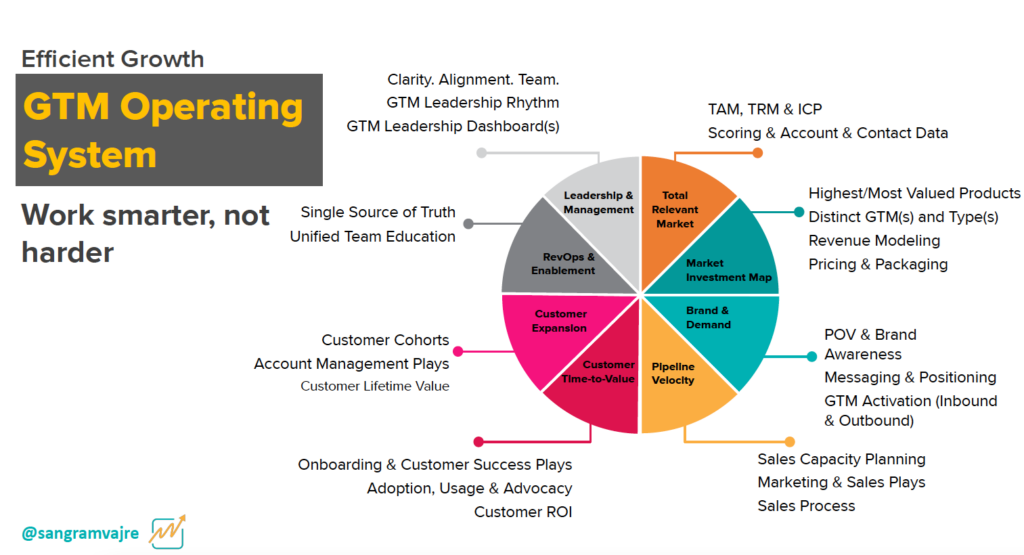
What’s important to note is that this approach relies on leadership to connect and build unity between the teams. We marketers often use the term “stickiness” in a variety of situations, but the same can be applied here. A go-to-market strategy requires stickiness amongst its teams for it to really take shape, fully mature, and fly.
My most actionable takeaway
Whether you’re a new kid on the block looking to make your industry debut or a company that has either stalled in growth or currently experiencing shrinking revenue, it is critical to not only define (or redefine) your go-to-market approach intentionally but to regard it as a working departmentally cohesive model. By siloing off departments that have historically interacted with different metrics of success, you’re likely leaving revenue on the table and allowing competitors to steal market share.
The Logic Of Emotion: How To Make Inaction Impossible
Presented by: Tamsen Webster, Find the Red Thread
Recapped by Jake High
Tamsen Webster says that something (pretty important) is missing from the majority of marketing messaging. Marketers do a great job of outlining the problem and offering a solution. But we often miss an important step – creating a messaging moment of truth.
What is that? It’s a realization about the problem your audience is facing that makes inaction impossible. Successful marketing creates an emotion that forces people to make a choice.
We’ll borrow Tamsen’s hilarious (and for legal reasons, satirical) example to illustrate.
Let’s say my company sells medicinal leeches. My argument is that my audience wants to improve their health; therefore, they need leeches.
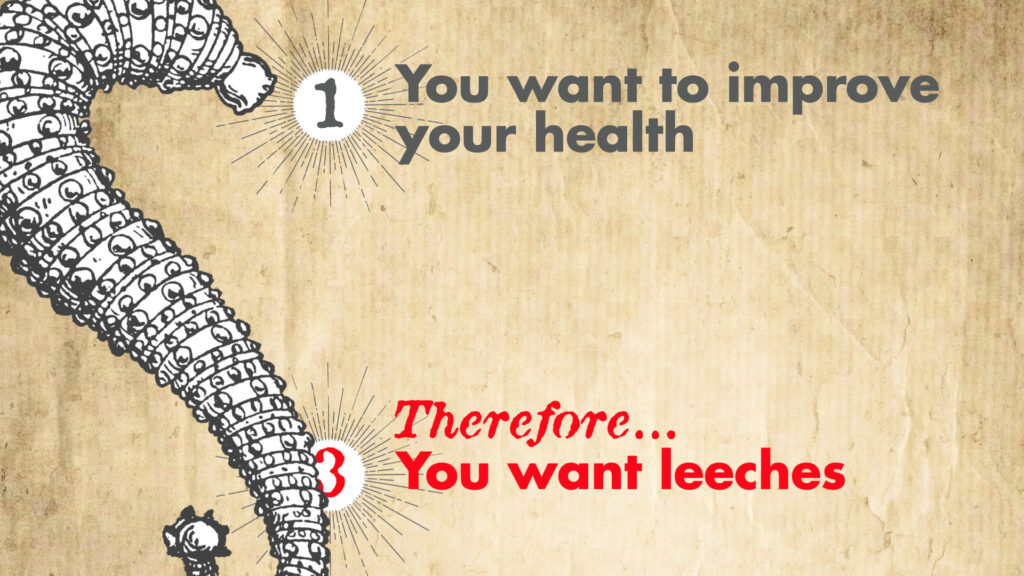
Makes sense, right? Tamsen argues that it’s only logical to me, not to my audience.
She says that every decision has a story. That means it must have a beginning, middle, and end in order to seem logical. As the marketer, I have inside knowledge and a bias that helps me fill in that missing middle part. My audience doesn’t have that information.
Here’s where Aristotle comes in. He believed that the critical component of motivation in any story is something called Anagnorisis. The word literally means “recognition,” but for our purposes, it’s more about the audience recognizing the “true nature” of their circumstance. We might call it an epiphany.
Without that element, we can create any number of illogical arguments:
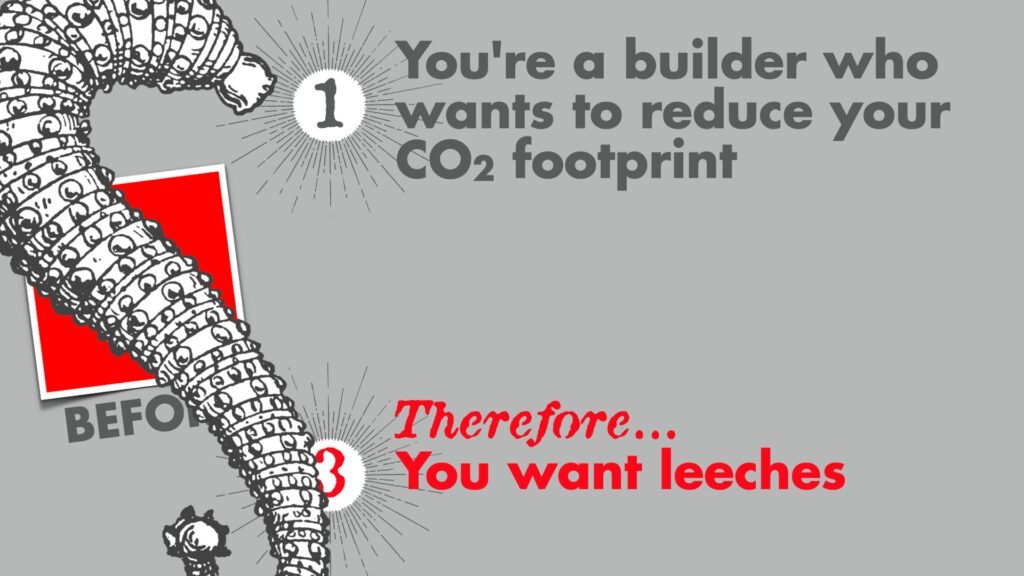
While most of our messages aren’t this illogical, her example is a great way of shifting our thinking about our own messaging. Think back on the messages you’ve put out lately. Did any of them leave your audience with the same, “huh?” reaction this one does?
The solution to filling in the middle of our story lies in something psychologists call the “Silent Assumption.” These are our deep-seated beliefs about how the world works.
In my leech business, that missing assumption is that leeches improve health. As the marketer for the business, I believe that inherently. My audience needs that crucial bit of information in order to make the story make sense.
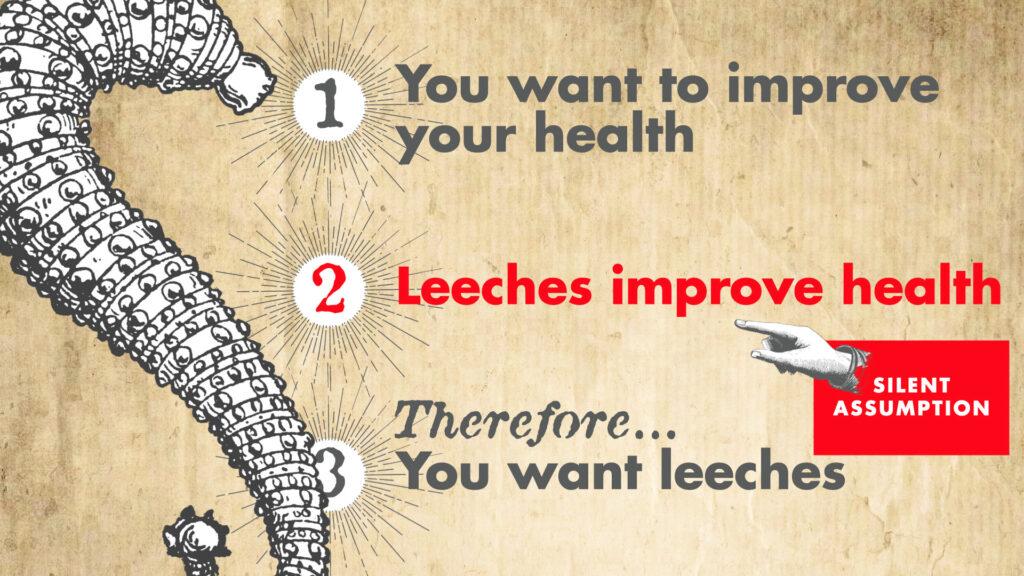
Now, not everyone in my audience will share that silent assumption. Those people were unlikely to buy from me anyway. But for those that do, stating the belief that they want to improve their health married with the information that leeches can help them do that makes it nearly impossible to ignore my message.
My most actionable takeaway
Think about every message as a story. Does yours have a clear beginning, middle, and end? Make sure it taps into a silent assumption for your audience and surfaces that truth to make the strongest argument possible.
Marketing Rules of Thumb: “Trust It” or “Bust It”
Presented by: Nancy Harhut, HBT Marketing and Tom Shapiro, Stratabeat
Recapped by Kyle Eliason
We all have heard of some golden rules of marketing. Some make sense like “know your buyer”, but what about tactical applications like “shorter is better?” Are these rules of thumbs surefire guidelines for marketing or are they meaningless proverbs? Nancy Harhut and Tom Shapiro debate four of the top marketing rules of thumb.
Copy should be short
Marketers often try and explain things too much, whether it be product solutions, features, or benefits. Copy should be short and punchy to maximize results. Behavioral analytics of page consumption show that when copy is too long and clunky, we lose buyers. Always edit, edit, edit – it becomes more powerful. A good place to test this is email marketing. Try a long-form email versus an extremely brief email and see which one drives more results.
On the other hand, the short copy can be inferior to longer copy. HubSpot studies show that blog posts between 2,100 and 2,400 words are best for search. Also, if you’re trying to sell on a page, buyers want to know everything before they pull the trigger. Even though attention spans are lower than ever, people spend over two hours per day consuming content and we just need to make sure they’re getting what they want.
Your marketing messages should include social proof
Social proof is like lighter fluid. It is one of the strongest forms of marketing. This can include celebrity endorsements, case studies, testimonials, and even customer reviews. Rober Cialdini’s book Influence talks about the impact of social proof to sway people. His example is canned laughter on TV – how although everyone hates the idea of it, it sways consumers to actually trust the performance and feel a part of things.
On the other hand, social proof sometimes can backfire. If you’re a smaller company without a lot of user testimonials, it can seem chintzy. And if you use social proof to talk about how many people are missing out on not using your product, potential buyers feel more comfortable not using it also. It can’t be that bad to not use the product if so many people are doing just fine without it.
Marketers should focus on benefits
Psychologically we’re all self-interested. Buyers don’t care about your company or even the features really. What they do care about is how your product will impact their lives. You need to evoke an emotional response with benefits.
On the other hand, marketers may sometimes lean too much into positive benefits. You can evoke a powerful emotional response with loss aversion tactics. Studies show that people are twice as motivated to avoid the pain of loss as to achieve the pleasure of gain.
Making people feel special or exclusive is a sure way to get them to buy
There is tremendous power in exclusivity. It drives the entire luxury layer of the economy. You can tap into this with limited-time offers, a limited number of items, and limited editions. Maybe for your next webinar, you talk about how few seats are left.
On the other hand, exclusivity is not something buyers always want. If a product or service is brand new, buyers reject early exclusivity in favor of something that is safe. This is a good time to bring in social proof or to evoke the authority principle like endorsements or approvals from trustworthy authorities like the ADA or Greenguard certification.
My most actionable takeaway
In marketing, there aren’t too many steadfast rules on their own. It’s about context and intention. What might work for some buyers may repel others. It’s important to be informed and analyze what your marketing may be communicating at a deeper level before committing to your marketing communication.
Ignite Your Brand With Empowerment Over Interruptions
Presented by: Jeff Rosenblum, Questus
Recapped by Ann Robison
Starting with the remarkable story about Phineas Gage, Jeff Rosenblum was off on an engaging, no-visuals-needed talk about how and why our understanding of the human brain should matter more to marketers.
The key according to Jeff is to connect with an audience’s prefrontal cortex, the part of the brain that (among other things) influences attention and prospective memory. In our world where the human brain is accosted with 11 million bits of information every second, we only consciously process 50 of those bits due to our prefrontal cortex. So how can our understanding of this impact our marketing tactics?
Rosenblum argues the answer is to pivot away from “interruption” as our chief means of communication (pop-up ads, print ads, commercials). Instead, he proposed that the most successful brands are the ones that focus not on interruption, but on empowerment and improving the lives of their customers. He claims that by embracing transparency and creating content and experiences that are so powerful that people go out of their way to consume them, brands not only bring value to their audiences but also drive trust and loyalty.
He also introduces the concept of psychological momentum, by citing a study about athletes’ performance in basketball games. According to this study, when one team was picking up momentum, and the other team calls a time-out, there was a 56% decrease in performance for the team that had all the momentum. The reason that’s important for marketers is because the time out is just friction. And brands unknowingly create friction all the time; the complex, non-intuitive app, the slow site speed, the popup on every website looking for your email.
The key to building psychological momentum is not only to reduce these points of friction, but to look at the full customer journey, and evaluate the small behaviors all the way from prospect to customer to evangelist. Where in all these micro-moments are consumers not having their emotional and functional needs met? Once you have the answer to that, you can create content that fulfills those needs and begin generating psychological momentum.
Too often, brands focus their marketing time and energy at the Campaigns level. But for products that have a long buying cycle, this can be a death sentence. If the average user takes, on average, 10 hours of research and demoing products before making a purchasing decision, then all that money that was poured into that great, hilarious 10-second ad is essentially wasted. 10 seconds in a 10-hour buyer journey is nothing.
My most actionable takeaway
The human brain automatically filters spam. Brands need to create content and experiences that are so powerful and engaging, that people go out of their way to consume them. The marketing industry cannot keep relying on interruptions, because modern marketing is now a value exchange. People aren’t only giving your brand their dollars, they’re giving time, their attention, data, and recommendation; and in exchange, they want content that informs, educates, and inspires. And they want it at every stage of the buying journey.
What’s Next: The “Seller Free Economy”—And The Future Of Sales And Marketing As We Know It
Presented by: Marcus Sheridan, IMPACT
Marcus Sheridan once again brought an infectious energy to this year’s INBOUND stage. This time around, in addition to his boundless stage presence, he brought a serious topic you need to quickly start considering if you haven’t already: The seller-free economy.
He also came bearing a few exciting numbers long to start his discussion. Did you know that the average prospect comes to your site 80% of the way through their buying journey? Combine this with the fact that 30-40% of buyers prefer to avoid speaking with a sales representative. To Sheridan, the disconnect lies in the current way that business sell. Sales teams may incorrectly believe they still need to educate up to that 80%. In our new, online-first, post-pandemic world, sellers must adapt to this new reality. Customers want to do the research themselves and then opt for a quick sales/confirmation call.
Here’s how he suggests that businesses can prepare for these seller-free customers.
Trust
Remember, these buyers are self-educating nearly 80% of the way through a buyer’s journey. Therefore, you must consider where they’re getting their information. Your site should educate the customer; leave no questions unanswered. He strongly recommends removing information gates, giving pricing ranges, and letting potential customers do all the research they want on one site: Yours. If a customer needs to go elsewhere to find a pricing range or whitepaper, you’ve given your competition a chance to gain better trust. There are no excuses here: “You don’t understand my business or customers,” or “our business model is different” justify sticking to an outdated model. If you’re attempting to drive prospects to a phone call by withholding information, be prepared to lose them to competitors who make the information readily available.
Self-Service
In addition to answering all the questions your customers want, it’s time to let them also start guiding themselves through the buying process. He has three topics for your consideration here.
- Self-Scheduling. Consider allowing your future customers to select the time and date of their consultation. Better yet, add bios of your sales team, and let customers pick a salesperson with which to speak. It may seem small, but it allows the customer to control the start of their journey on their terms. Sheridan notes that a company that implemented this tactic saw a 62% higher close rate.
- Self-Selection. Build out an online, interactive journey that lets your customers make critical decisions as you guide them. Educate them along the way with tooltips, videos, and additional considerations. Arm them with all of the information they’ll need.
- Self-Pricing. Modern internet users are a savvy lot. They’re used to buying flight tickets, shopping for groceries, and customizing potential car purchases online. Your site should allow a customer to complete a sale or at least a request for a price-range quote.
My most actionable takeaway
Self-service is no longer just for larger e-commerce companies. It’s time to lean in and find ways to let your customers take the reigns of their buying experience. Sheridan has five action items for you to take:
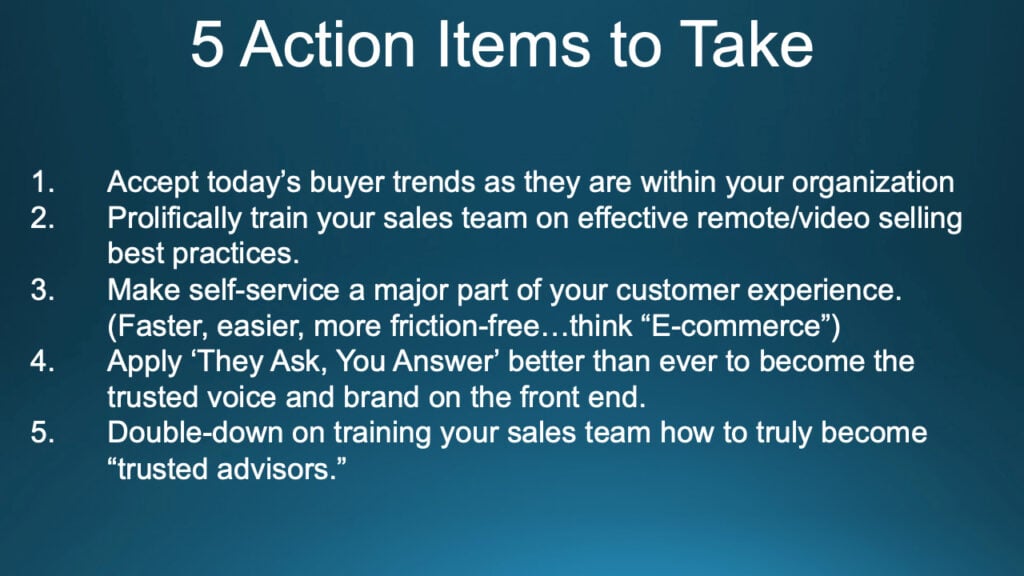
Final Thoughts
We left INBOUND 2022 with a ton of tips, tricks, and insights on the future of inbound marketing. We can’t wait to apply everything we learned to the work we do at Portent!
The post Our Favorite INBOUND 2022 Sessions appeared first on Portent.

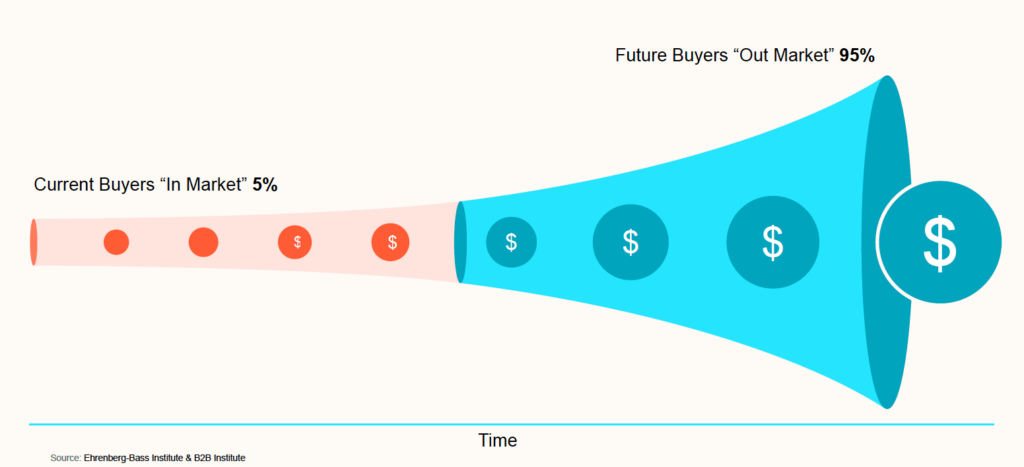

![Read more about the article How to Create a Facebook Group for Your Business [+ Why You Should]](https://www.dimaservices.agency/wp-content/uploads/2021/01/steponetomakegroup.jpg3Fwidth3D50626name3Dsteponetomakegroup-300x276.jpg)
